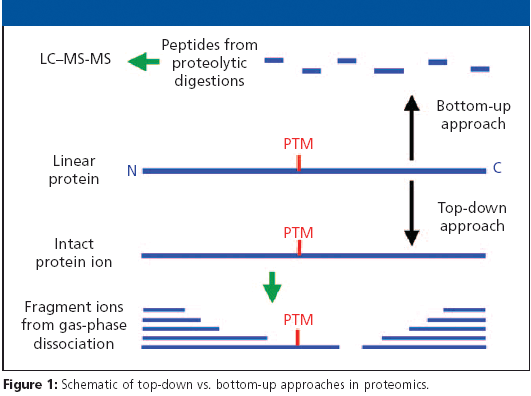
Mass production is the processing of large quantities of standardised goods often using assembly lines or technologies of automation. Mass production is also known as a flow production, repetitive flow production, series production or serial production. A production process is a method a business uses to manufacture products for its customers. The right production process enables businesses to meet customer demand, minimize waste, and maximize profits.
Mass Megawatts Announces Breakthrough for Lowest-Cost Energy Production with More Details on June 29 – Yahoo Finance
Mass Megawatts Announces Breakthrough for Lowest-Cost Energy Production with More Details on June 29.
Posted: Fri, 16 Jun 2023 10:00:00 GMT [source]
Under such circumstances weld underbead gas shielding may also be required and, for this, similar gas flow rates as for the top weld bead are suggested. However, where underbead shielding is used, care must be taken to ensure that the underbead gas does not try to exhaust through the keyhole and cause the entrapment of gas pores in the weld. As the production process is streamlined and to a certain extent, automated, there is a reduced level of waste. In contrast, mass production is the forerunner of mass customization. Mass production companies replicate a hierarchical and bureaucratic system where workers perform repetitive roles that are narrowly defined, resulting in standardized, low-cost products. Mass production involves multiple assembly lines, where various people run routine procedures and do one specific job.
Fast Production
Areas of this are etched and doped to produce the p-type silicon of the base layer. Although the silicon in the base begins as n-type, it is converted to p-type by diffusing an excess of a hole-producing dopant, to cancel out the effects of the electron-producing dopant already present. The wafer is then exposed to a mask which causes smaller areas to be etched over the base layer, and then the wafer is doped to produce a smaller shallower n-type layer (emitter) in the base layer. Finally the collector (substrate), base and emitter contacts are added by placing the wafer in a vacuum, covering it with a mask and evaporating metal on to it.

MP techniques have been used in the automobile industry for over a century. The Ford Model T was the first mass-produced car, with over 15 million produced between 1908 and 1927. With interchangeable parts, manufacturers could produce goods more quickly and with greater consistency, which paved the way for mass production.
Smooth Production Flow
Manufacturers are experimenting with the integration of three-dimensional (3D) printers in the mass production of everyday products. Consequently, the economies of scale resulted in the most affordable price of any commodity for the customer without having to sacrifice income for the producer. Considered to be one of the most profitable devices ever produced; iPhone‘s product revenue reaches $91.3 billion. When iPhone 5 was launched, this firm experienced its biggest growth.
Opinion Biden is making a key mistake on industrial policy – The Washington Post
Opinion Biden is making a key mistake on industrial policy.
Posted: Mon, 19 Jun 2023 14:30:00 GMT [source]
Moreover, mass production has spurred technological innovation as manufacturers sought to develop more efficient and cost-effective ways of producing goods. This means that businesses can produce unique or customized products without having to disrupt the entire production process. This can have a significant impact on the environment, including pollution from manufacturing processes, waste from discarded products, and increased example of mass production energy consumption. The rise of mass production techniques over the last century has transformed the way we produce and consume goods. No matter which production process you implement, you can use software to take control of your operations management. QuickBooks Enterprise for Manufacturing has all the business management functionality you need to keep your inventory management and sales fulfillment on track.
Mass Production web and print resources *
Electrification enabled modern mass production, as with Thomas Edison’s iron ore processing plant (about 1893) that could process 20,000 tons of ore per day with two shifts, each of five men. At that time it was still common to handle bulk materials with shovels, wheelbarrows and small narrow-gauge rail cars, and for comparison, a canal digger in previous decades typically handled five tons per 12-hour day. Upon the introduction and innovation of mass production, consumer goods could be produced for the broadest possible audience. Something required or needed by customers could be achieved in more significant quantities. However, certainly, the principles of efficiency and human ingenuity that underpin mass production will continue to be a critical driver of economic growth and technological innovation. By developing innovative products that are in high demand, manufacturers can create economies of scale that allow for efficient and profitable serial production.
Also, all products produced on one production line will be identical or very similar, and introducing variety to satisfy individual tastes is not easy. However, some variety can be achieved by applying different finishes and decorations at the end of the production line if necessary. The starter cost for the machinery can be expensive so the producer must be sure it sells or the producers will lose a lot of money. One of the descriptions of mass production is that “the skill is built into the tool”[citation needed], which means that the worker using the tool may not need the skill. For example, in the 19th or early 20th century, this could be expressed as “the craftsmanship is in the workbench itself” (not the training of the worker). It had already been checked that the finished part would be to specifications to fit all the other finished parts—and it would be made more quickly, with no time spent on finishing the parts to fit one another.
Resources created by teachers for teachers
As our societies become more complex and our demands become more diverse, this method of production will likely continue to evolve. This made it necessary to design and implement quality control systems that identify defects and prevent them from reaching the consumer. Companies like Nestle and PepsiCo use specialized machinery to produce millions of units of their products each year. Fast fashion, a term that describes the production of low-cost, trend-driven clothing, relies heavily on these techniques.

Consumers generally accept standard products under a mass-production system. On a mass basis, companies manufacturing goods benefit from economies of scale since it facilities market expansion and price reduction. The low product pricing encourages demand clusters around homogenous products. It acts as a feedback loop that reinforces standardized products to the manufacturing firms, given the interplay between consumers and producers.